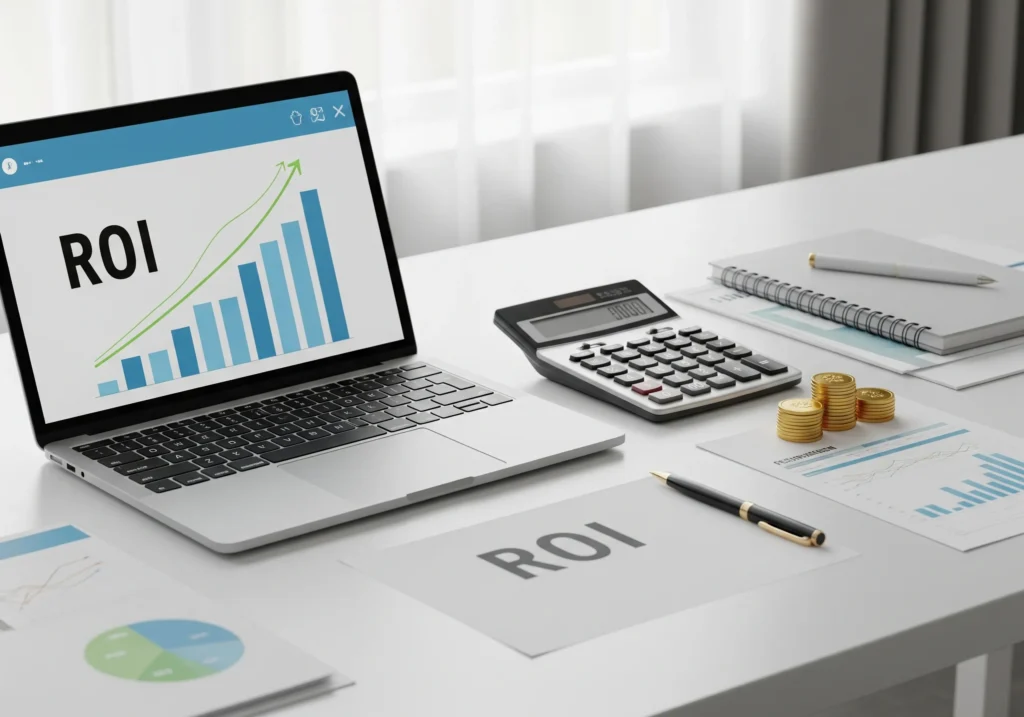ROI Calculator – Measure Investment Returns

📈 Investment Details
📊 Investment Results
Total Investment
Total Return
Future Value
ROI
ROI Calculator – Measure Investment Returns
Investing money is all about making your money grow. But how do you know whether an investment is worth it or not? That’s where ROI (Return on Investment) comes in. ROI shows you how much profit (or loss) you made compared to the money you invested.
A ROI Calculator helps you quickly measure this. By entering your initial investment, monthly contributions, time period, and expected annual return, you can instantly see:
- Total Investment
- Total Return
- Future Value
ROI (%)
What is ROI?
ROI (Return on Investment) is a percentage that tells you how much you gained or lost compared to the money you invested.
- If ROI is positive, you earned a profit.
- If ROI is negative, you lost money.
For example, if you invested $1,000 and it grew to $1,200, your ROI is 20%.
What is an ROI Calculator?
An ROI Calculator is a tool that shows you how much your investments could be worth in the future. It factors in:
- Your initial investment (starting amount).
- Any monthly contributions you make regularly.
- The number of years you plan to invest.
- The expected annual return (%) on your investment.
The calculator then gives you:
- Total Investment – how much money you put in.
- Future Value – what your investment could grow to.
- Total Return – how much profit you made.
ROI (%) – the return expressed as a percentage.
How the ROI Calculator Works (Step by Step)
Step 1: Enter Initial Investment
This is the lump sum you start with. Example: $5,000.
Step 2: Enter Monthly Contribution
Add how much you will invest every month. Example: $200/month.
Step 3: Enter Investment Period (Years)
How long you plan to invest for. Example: 10 years.
Step 4: Enter Expected Annual Return (%)
This is the rate of return you expect based on the type of investment. Example: 8% per year for stock market investments.
Step 5: The Calculator Runs the Formula
It applies compound interest formulas to calculate how your money grows over time.
Step 6: Results Are Displayed
The calculator will show you:
- Total Investment = Initial + all monthly contributions
- Future Value = what your money could grow into
- Total Return = Future Value – Total Investment
ROI (%) = (Total Return ÷ Total Investment) × 100
ROI Formulas
- Future Value of Investment (with monthly contributions)
FV = P × (1 + r)^t + C × [((1 + r)^t – 1) ÷ r]
Where:
- FV = Future Value
- P = Initial Investment
- C = Monthly Contribution (converted to yearly if needed)
- r = Annual Return Rate (in decimal form, e.g., 8% = 0.08)
- t = Time in years
- Total Investment
Total Investment = Initial Investment + (Monthly Contribution × 12 × Years) - Total Return ($)
Total Return = Future Value – Total Investment - ROI (%)
ROI = (Total Return ÷ Total Investment) × 100
Real-Life Example
- Initial Investment = $5,000
- Monthly Contribution = $200
- Years = 10
- Annual Return = 8%
Total Investment = 5,000 + (200 × 12 × 10) = $29,000 Future Value ≈ $45,893 (using compound formula) Total Return = 45,893 – 29,000 = $16,893 ROI = (16,893 ÷ 29,000) × 100 ≈ 58.2% So after 10 years, you invested $29,000, but your money grew to $45,893, giving you an ROI of 58.2%.
Frequently Asked Questions (FAQs)
Popular Calculators

Cooking Measurement Converter – Cups, Ounces, Milliliters, Grams & More

Hourly to Salary Converter – Calculate Annual Income

Corrected Calcium Calculator | Accurate Serum Calcium Interpretation

BUN to Creatinine Ratio Calculator | Assess Kidney Function

Fraction to Decimal Converter

